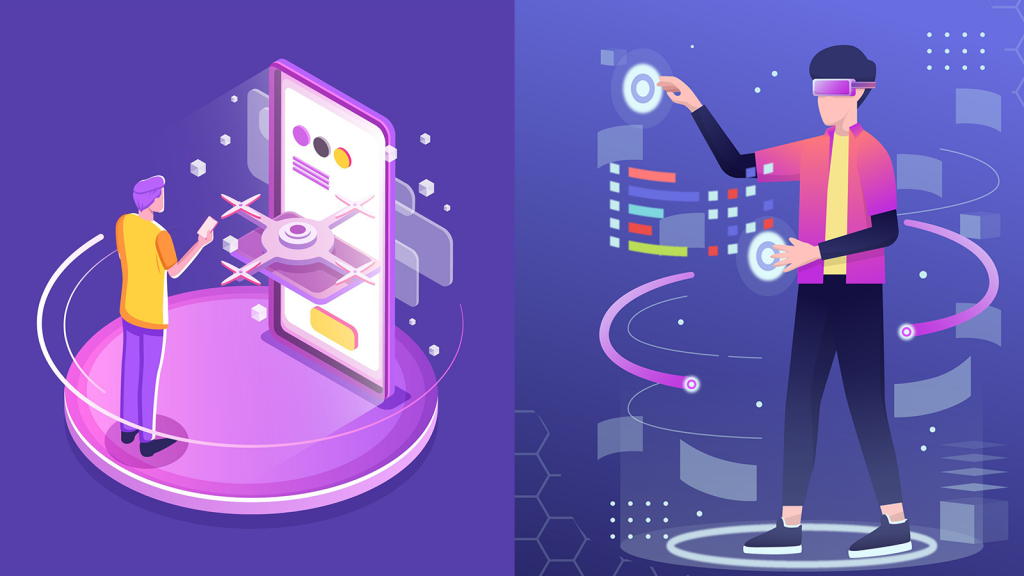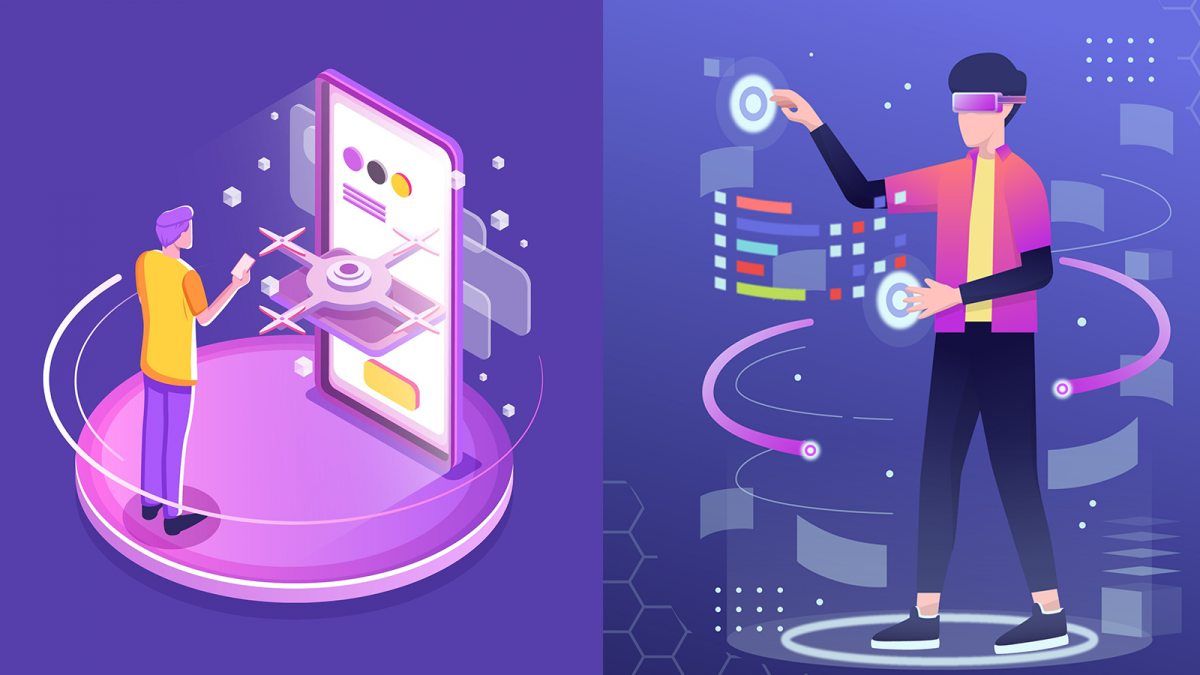AR/VR is extensively used in gaming, education, entertainment, healthcare, hitech shop displays and employee training etc.
VR can be implemented in manufacturing processes, fashion, art, construction, social media and industrial design.
AR is designed to provide live view by adding digital elements on a smartphone for example : Pokemon Go and Snapchat Lenses.
VR is designed to cut you off from the surroundings or physical world by implementing a complete immersion experience.
Unity Game Engine is the best choice for making VR & AR applications as the designing is hard.
AR/VR can be applied in various sectors these days and form a bridge between physical and digital arena :
- Retail
- Education
- Medical Training
- Design Modelling
- Field Service
- Business Logistics
- Repair & Maintenance
- Tourism Industry
Android Devices must install Android 7.0 Nougat to get compatible AR. AR has a wide scope in medical training and ranges from MRI to complex surgery. In foreign Universities students are introduced with ins and outs of anatomy using AR glasses by implementing real world settings.
There are 500 millions devices which enable AR software and 200 Google AR Apps in the iOS App store. The market of AR is exploring avenues with a rise to grow in billions in coming years.
AR uses sensors, camera, GPS, accelerometers, gyroscopes, RFID, Compasses, wireless, microphones, stylus, gloves, touch screens and gesture devices.

Examples of AR :
- IKEA Mobile App
- Disney Coloring Book
- U.S. Army
- L’Oreal Makeup App
- Nintendo’s Pokemon Go App
- Weather Channel Studio Effects
- Google Pixel’s Star Wars Stickers
Benefits of AR :
- Develop efficient online shopping experiences
- Easy to use and navigate
- Personalized Offers
- Contactless trial
- Desired Products
- Online engagement
Softwares used in AR/VR :
- Vuforia
- MAXST
- Kudan
- Apple ARkit – ARKit is used for AR development and it cannot be used by android phones and uses camera sensor data to analyze surrounding visualization.
- ARToolkit –
- Google ARCore – It is an open source in order to bring AR experiences to Android with the implementation of APIs.
VR is completely virtual and can cause eye discomfort, strain, fatigue and blurred vision. In order to operate it you would require a headset, computer, PC(8GB RAM), Intel core i5 processor, USB ports with NVIDIA GeForce GTX 1060 video card. VR uses 3 primary simulations : fully Immersive, semi immersive and non immersive simulations.
VR is potentially exploring revenue in the gaming industry by improvising gaming experience. It is fully immersive in generating its own world allowing users to step into the synthetic world. Magnetic sensors will help HMD to sense the head movement and process the information to the processor.
Specified Age for Implementing VR :
- Vive : Not applicable to young childrens
- Sony PlayStation VR : Not applicable to children under 12 years of age
- Oculus : Not applicable to children under 14 years of age
Benefits of VR :
- Hassle free shopping
- V-Commerce retail stores
- Inside- store VR
- Training employee
Examples of VR :
- YouTube VR
- Jaunt VR
- Sinespace
- AltspaceVR
- Second Life
- Google Earth VR
- Titans Of Space
Conclusion : Both the technologies are the reciprocated reflective images of each other in terms of technology in order to sustain real world and real life experience.
